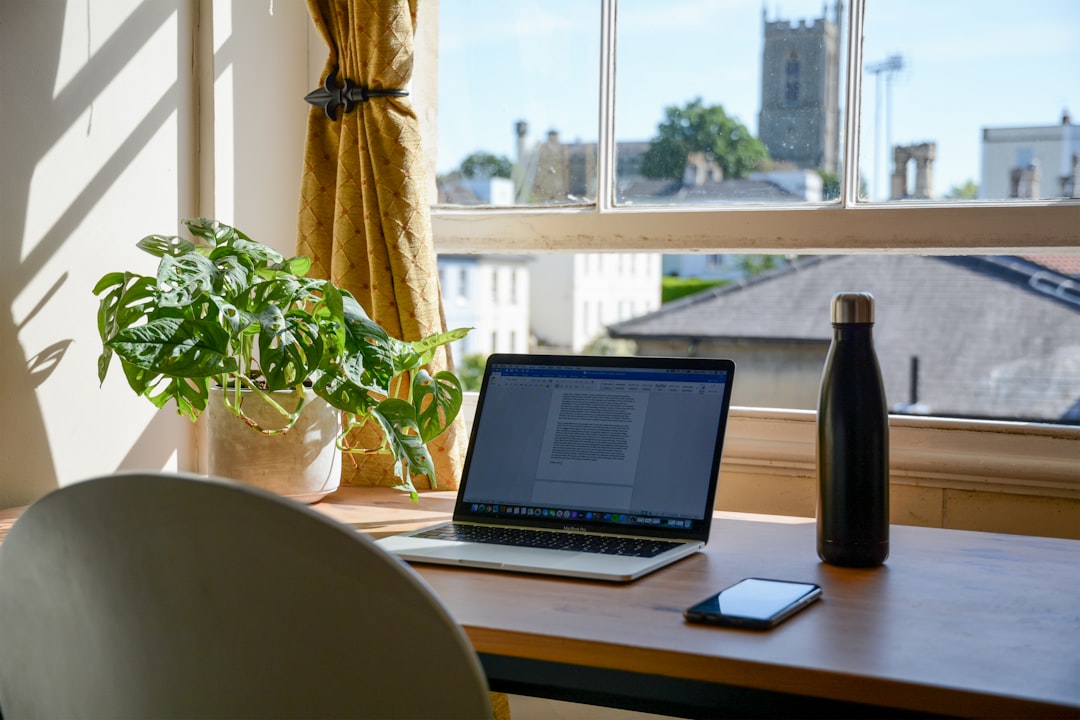Managing your time effectively is crucial to overall productivity and achieving a healthy work-life balance. Many of us struggle with finding enough hours in the day to complete our tasks and still have time for ourselves and our loved ones. However, by adopting certain strategies and making conscious choices, we can maximize our time and increase our efficiency. In this blog post, we will explore various techniques and tips to help you become a master of time management and regain control of your schedule. So, let’s dive in and discover how you can optimize your time and lead a more balanced and fulfilling life.
Prioritize your tasks and set clear boundaries
When it comes to managing your workload and maintaining a healthy work-life balance, one of the most important steps you can take is to prioritize your tasks and set clear boundaries. Without proper prioritization, it’s easy to get overwhelmed and feel like you’re constantly playing catch-up.
Start by making a to-do list and ranking your tasks in order of importance. This will help you focus on the most critical items first and ensure that you’re making progress on the things that truly matter. Prioritization allows you to allocate your time and energy efficiently, so you can avoid wasting precious resources on less essential tasks.
In addition to prioritizing your tasks, it’s crucial to set clear boundaries for yourself and others. This means establishing limits on what you can realistically accomplish within a given timeframe and communicating those boundaries to your colleagues, clients, and loved ones. By setting realistic expectations, you’ll avoid feeling overwhelmed and reduce the likelihood of burnout.
Setting boundaries also involves learning to say no when necessary. It’s important to recognize your own limitations and not take on more than you can handle. Saying no doesn’t make you selfish or incapable; it simply means you’re being mindful of your own well-being and preserving your energy for the tasks that truly align with your goals and priorities.
Another aspect of setting boundaries is creating a clear separation between work and personal life. It’s all too easy to let work bleed into your personal time, especially if you work from home or have flexible working hours. By defining specific working hours and sticking to them, you’ll be able to maintain a healthier balance and protect your personal time for relaxation, hobbies, and spending quality time with loved ones.
Remember, prioritizing your tasks and setting clear boundaries requires discipline and self-awareness. It may take some time to find the right balance, but with practice and perseverance, you’ll be able to create a work-life harmony that leaves you feeling fulfilled and satisfied in both aspects of your life.
This means establishing limits on what you can realistically accomplish within a given timeframe and communicating those boundaries to your colleagues, clients, and loved ones.
Practice Time Management and Avoid Multitasking
In today’s fast-paced world, it’s easy to become overwhelmed with numerous tasks and responsibilities. However, practicing effective time management can greatly increase productivity and reduce stress levels. Instead of trying to tackle multiple tasks at once, it is crucial to focus on one task at a time and allocate dedicated time for each task.
When you try to multitask, your attention becomes divided, leading to decreased efficiency and a higher likelihood of errors. It may seem like you’re being productive by juggling various tasks simultaneously, but in reality, you’re spreading yourself too thin and jeopardizing the quality of your work. By dedicating your attention to a single task, you can fully immerse yourself in it and deliver a better outcome.
To practice effective time management, start by prioritizing your tasks based on their importance and urgency. This will allow you to focus on critical tasks first and ensure they are completed in a timely manner. By setting clear boundaries around your time and dedicating specific slots for specific tasks, you can effectively manage your workload and prevent tasks from piling up.
Another helpful technique is to break down complex tasks into smaller, more manageable sub-tasks. This way, you can tackle them in increments and make progress without feeling overwhelmed. Additionally, it is essential to eliminate distractions that can derail your focus. This may involve turning off notifications on your phone or computer, closing unnecessary tabs or apps, or finding a quiet and dedicated workspace.
While it may be tempting to have multiple tabs open or respond to emails while working on a project, remember that constantly switching between tasks can significantly hinder your productivity and lead to mistakes. Research has shown that multitasking can reduce overall productivity by up to 40% and increase the likelihood of errors. So, it’s always better to practice single-tasking and give your full attention to one task at a time.
Furthermore, it is crucial to acknowledge your limitations and not overload yourself with more tasks than you can handle. Remember that it’s okay to say no and delegate tasks when necessary. Delegating not only frees up your time but also allows others to contribute and grow, fostering a sense of collaboration and teamwork.
By practicing effective time management, avoiding multitasking, and focusing on one task at a time, you can enhance your productivity, increase efficiency, and reduce stress levels. So, prioritize your tasks, set clear boundaries, and give your undivided attention to each task as you move forward towards achieving your goals.
So, prioritize your tasks, set clear boundaries, and give your undivided attention to each task as you move forward towards achieving your goals.
4. Learn to delegate and seek support from others
One of the key factors in managing your workload effectively is learning to delegate tasks and seeking support from others. Trying to do everything yourself can quickly lead to burnout and overwhelm, which can have a detrimental effect on your productivity and overall well-being.
Delegation involves assigning tasks to others who have the skills and resources to handle them efficiently. It not only lightens your workload but also allows you to focus on tasks that require your expertise and attention. Delegating can be challenging for some individuals, as it requires trust and the ability to let go of control. However, once you master this skill, you’ll find yourself with more time and energy to devote to your most important priorities.
When considering delegation, it’s crucial to understand the strengths and capabilities of your team members or colleagues. Assess their skills, knowledge, and availability to determine which tasks can be effectively assigned to them. Clear communication is key to successful delegation, ensuring that everyone understands their responsibilities and deadlines.
Seeking support from others is equally essential in managing your workload. It could mean reaching out to a trusted coworker for assistance on a project, collaborating with a team to brainstorm ideas, or seeking guidance from a mentor. By leveraging the strength and expertise of others, you can achieve better outcomes and enhance your own abilities.
Remember, asking for help is not a sign of weakness but rather a smart move towards efficiency and increased productivity. You don’t have to shoulder every burden alone. Learning to delegate and seek support not only benefits you but also strengthens relationships and fosters collaboration within your workplace or personal life.
Additionally, seeking support can also include outsourcing tasks to external professionals or utilizing tools and resources that can automate or streamline certain processes. Don’t be afraid to explore these options, as they can significantly optimize your time and energy.
Ultimately, delegation and seeking support from others enable you to distribute tasks more effectively, tap into the collective skills and knowledge of those around you, and foster an environment of collaboration and growth. Not only will this help you manage your workload more efficiently, but it will also contribute to your personal and professional development.
Don’t be afraid to explore these options, as they can significantly optimize your time and energy.
Incorporate regular breaks and maintain a healthy lifestyle
In today’s fast-paced world, it’s easy to get caught up in the never-ending cycle of work and responsibilities. However, it’s crucial to remember that taking regular breaks and maintaining a healthy lifestyle are essential for our overall well-being and productivity.
One of the most effective ways to enhance productivity is by incorporating regular breaks into your daily routine. Studies have shown that taking short breaks throughout the day can actually improve focus and concentration. By allowing yourself time to rest and recharge, you’ll find that you have more energy and mental clarity to tackle your tasks.
But how exactly can you incorporate breaks into your busy schedule? Well, it’s all about being intentional and proactive. Set a timer for every hour or two and commit to taking a short break during that time. Use this break to stretch your legs, grab a healthy snack, or engage in a quick mindfulness exercise. By stepping away from your work, even for just a few minutes, you’ll give your mind a chance to reset and refocus.
In addition to incorporating regular breaks, maintaining a healthy lifestyle is also crucial for personal and professional success. Your physical well-being directly impacts your energy levels, mood, and overall performance. So, it’s essential to prioritize activities that promote a healthy lifestyle.
Start by focusing on your diet. Fuel your body with nutritious foods that provide sustained energy throughout the day. Incorporate fruits, vegetables, whole grains, and lean proteins into your meals and snacks. Avoid excessive consumption of unhealthy foods and sugary drinks that can lead to energy crashes and sluggishness.
In addition to a balanced diet, regular exercise is key to maintaining a healthy lifestyle. Find physical activities that you enjoy, whether it’s going for a run, practicing yoga, or hitting the gym. Aim for at least 30 minutes of moderate-intensity exercise most days of the week. Not only will exercise improve your physical health, but it will also boost your mood and reduce stress.
Alongside incorporating breaks and maintaining a healthy lifestyle, it’s also important to establish boundaries with technology and limit screen time. With smartphones, social media, and endless notifications, it’s easy to become overly dependent on technology and constantly feel distracted. By setting aside specific times to unplug and disconnect from the digital world, you’ll create space for relaxation and rejuvenation.
Lastly, nurturing and fostering strong personal relationships is vital to achieving a work-life balance. Make an effort to spend quality time with loved ones, whether it’s going out for a meal, having a game night, or simply enjoying a conversation. Building and maintaining these connections will not only bring joy and fulfillment but also provide a support system during challenging times.
Incorporating regular breaks and maintaining a healthy lifestyle should be a priority in our lives. By taking care of ourselves physically and mentally, we can enhance our productivity, improve our overall well-being, and create a more balanced and fulfilling life. So, remember to prioritize self-care, set boundaries, and make time for rest, exercise, and meaningful relationships. You deserve it!
One of the most effective ways to enhance productivity is by incorporating regular breaks into your daily routine.
Establish boundaries with technology and limit screen time
Technology has become an integral part of our lives, and while it offers numerous benefits, it can also become a major hindrance when it comes to managing our time effectively. In today’s digital age, we are constantly bombarded with notifications, emails, and social media updates, making it challenging to stay focused and productive. That’s why it is crucial to establish boundaries with technology and limit our screen time.
One way to create boundaries with technology is by setting specific time slots for using electronic devices. Allocate dedicated periods for checking emails, browsing social media, or engaging in other digital activities. By doing so, you ensure that technology doesn’t encroach upon your valuable time, allowing you to focus on the important tasks at hand.
Another effective strategy is to turn off unnecessary notifications. Constantly being interrupted by beeping phones or buzzing smartwatches can significantly disrupt your workflow and concentration. Take control of your devices by disabling notifications for non-essential apps and services. This way, you can eliminate unnecessary distractions and regain control over your attention.
It is also essential to establish no-screen zones or times. Designate certain areas or periods in your day where technology is strictly off-limits. For example, you might decide to have a technology-free dinner table or establish screen-free hours before bedtime to promote better sleep and relaxation. By creating these boundaries, you not only limit your exposure to screens but also allow yourself to fully engage in other important activities such as conversations with loved ones or quality self-care time.
Furthermore, strive to develop a healthy relationship with social media. While it can be an excellent tool for connecting with others and staying informed, it can easily become a source of distraction and time-wasting. Set limits on the time you spend on social media platforms and be mindful of the content you consume. Unfollow accounts that do not bring value to your life and instead prioritize those that inspire, educate, or entertain in a meaningful way.
In addition to setting boundaries, it is crucial to develop a healthy mindset around technology. Understand that it is a tool that should serve you, not the other way around. Recognize when it’s time to unplug and disconnect from the digital world. Embrace the beauty of offline experiences, such as spending quality time with loved ones, engaging in hobbies, or simply taking a leisurely walk in nature. By doing so, you will foster a healthier balance between technology and the more fulfilling aspects of life.
Finding the right balance between technology and productivity is a continuous process that requires discipline and self-awareness. By establishing boundaries with technology and limiting screen time, you are reclaiming your time and allowing yourself to be fully present in other areas of your life. Remember, it’s about using technology as a tool to enhance your life rather than letting it control your every move.
Finding the right balance between technology and productivity is a continuous process that requires discipline and self-awareness.
Develop and Maintain Strong Personal Relationships
In the hustle and bustle of our busy lives, it can be easy to overlook the importance of cultivating and nurturing personal relationships. However, these connections are essential for our overall well-being and happiness. When we invest time and effort into developing strong personal relationships, we not only enrich our own lives but also create a support system that can help us navigate through the challenges and ups and downs of life.
One of the keys to building and maintaining strong personal relationships is effective communication. Take the time to really listen to the people in your life and make an effort to understand their perspective. Show empathy and compassion, and be genuine in your interactions. Open and honest communication lays the foundation for trust and deepens the connection between individuals.
It’s also important to make time for the people who matter most to you. In our busy lives, it can be easy to let relationships take a backseat to other obligations. However, carving out dedicated time for your loved ones shows them that they are a priority in your life. Whether it’s scheduling regular date nights with your partner, setting aside time for family dinners, or planning outings with friends, investing in quality time together helps strengthen bonds and create lasting memories.
Remember, personal relationships are not just about being physically present. They also require emotional presence and support. Be there for your loved ones during both their triumphs and their struggles. Celebrate their successes and be a source of comfort and strength in times of need. By offering your support and showing up for the people you care about, you create a deep sense of connection and foster meaningful relationships.
Another aspect of developing strong personal relationships is being mindful of boundaries. Each individual has their own needs, and it’s important to respect those boundaries. Give space when needed, and be understanding of the varying levels of comfort people have when it comes to sharing and intimacy. Building strong relationships means recognizing and honoring the unique aspects of each person while building a foundation of mutual respect and trust.
Lastly, remember to celebrate and appreciate the people in your life. Acknowledge their contributions and express gratitude for their presence. Small gestures of kindness and appreciation can go a long way in nurturing and maintaining strong personal relationships. Whether it’s a simple thank you, a thoughtful gift, or a heartfelt compliment, these acts of kindness show others that they are valued and cherished.
In conclusion, developing and maintaining strong personal relationships is a vital component of living a fulfilling and balanced life. By prioritizing effective communication, making time for loved ones, being emotionally present, respecting boundaries, and expressing appreciation, we can cultivate deep and meaningful connections that enhance our overall well-being. Investing in our relationships not only brings joy and happiness but also provides us with a support system that helps us navigate the challenges of life. So, take the time to nurture your personal relationships and watch your life blossom with love and connection.





